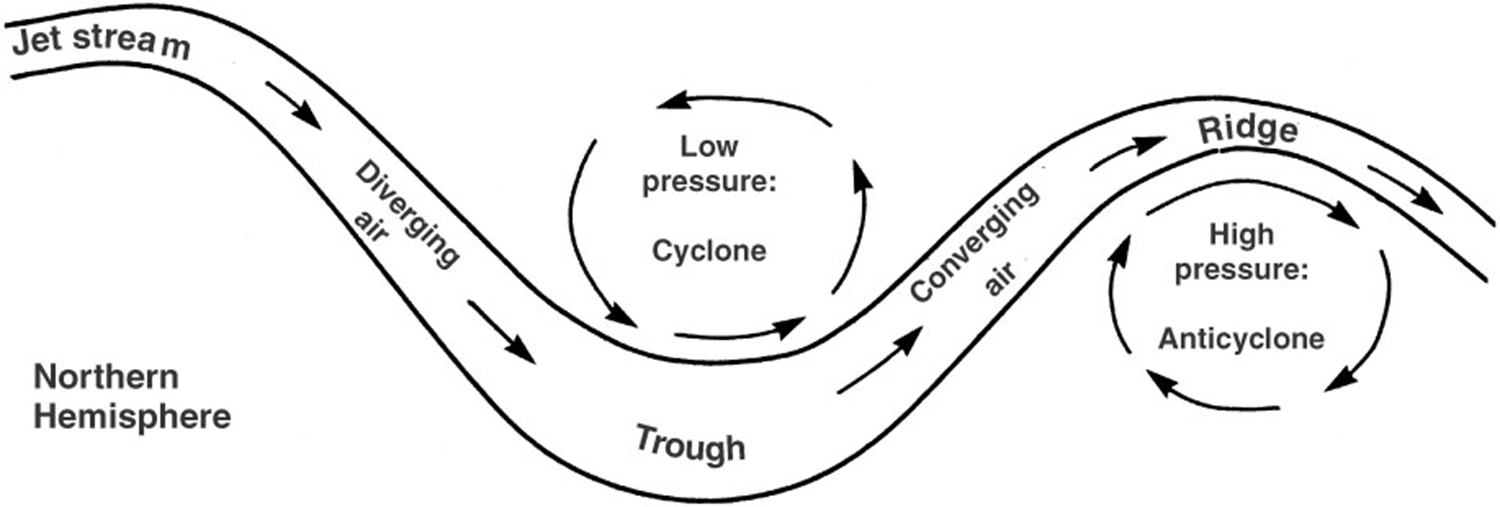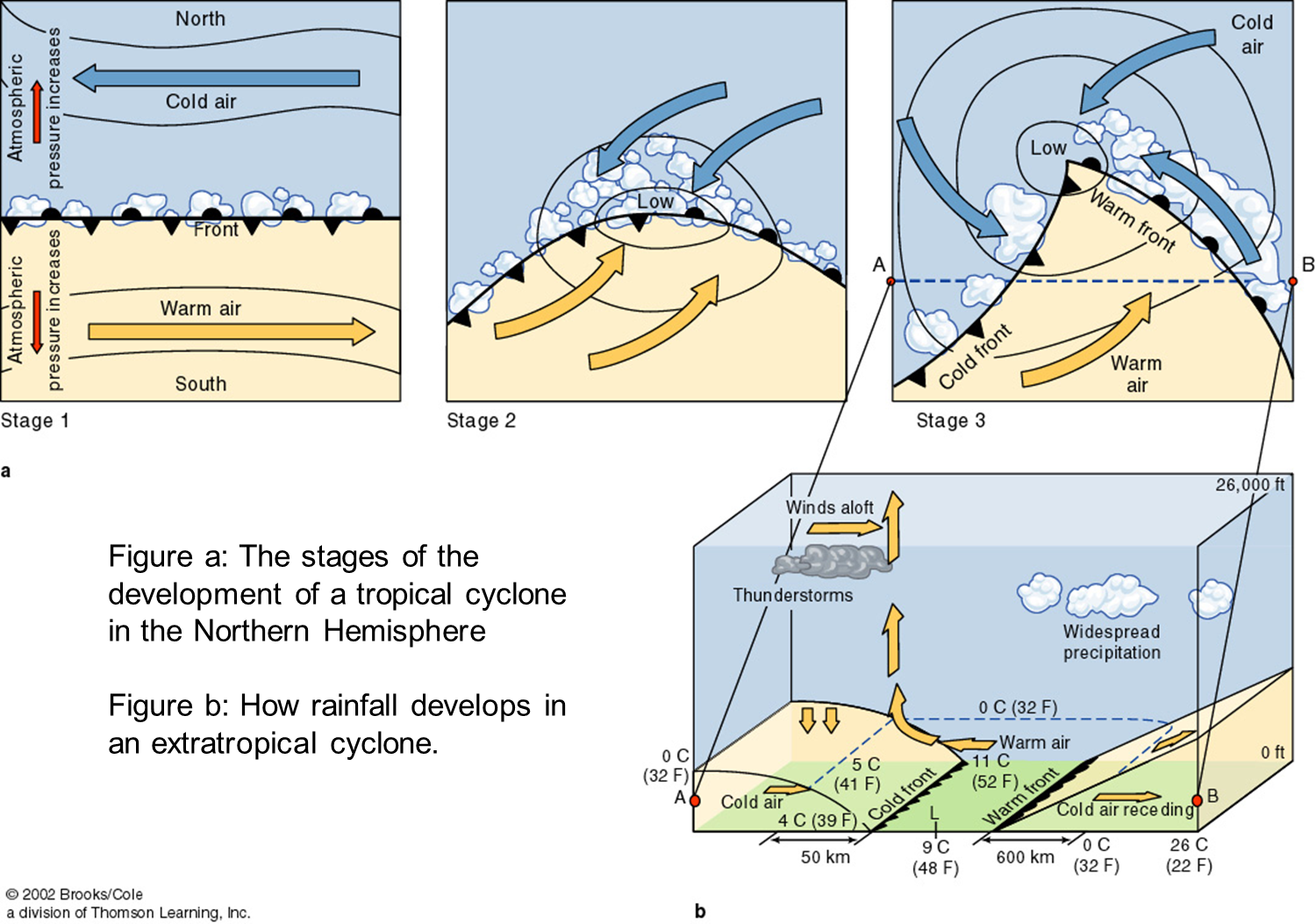Storms
Air Masses
Storms are regional atmospheric disturbances. Storms have high winds and most have precipitation. Tropical cyclones occur in tropical regions. These storms can cause millions of dollars worth of damage and endanger life. Extratropical cyclones occur in Ferrel cells, and are winter weather disturbances. These storms can also cause extensive damage. Both types of storms are cyclones, or rotating masses of low-pressure air.
Air Masses
Air masses are a large body of air with nearly uniform temperature, humidity and density throughout. Air passing over land or water will take on the characteristics of the surface below it. These air masses can move within or between circulation cells. Different air masses do not mix! When two air masses meet, they form boundaries called “fronts”. Air masses can move within or between circulation cells.
 |
| Cold fronts are formed when cold air moves into an area. The cold air moves beneath the warm air mass, moving it upwards. The warm air is quickly uplifted, where it expands, cools and condenses to form thick clouds, thunderstorms. |
 |
| Warm fronts form when warm air moves into an area. The warm air moves over a cooler air mass. The warm air is gently uplifted, where it expands, cools and condenses to form low clouds, and light precipitation |
Cyclones and Anticyclones
Bends in the polar jet create troughs and ridges. When two fluid media are moving in different directions near one another, turbulence forms between them. The air will start to rotate in a counterclockwise direction as air moves down and then up in the trough of the jet stream, which will form a cyclone. The air will start to move in a clockwise direction as the air moves up and over a ridge in the jet stream, which will form an anticyclone.

Cyclones - form a low pressure zone in polar jet trough. Winds at surface flow counterclockwise towards the core, where the air is updrafted. The air then expands, cools and condenses to form clouds, precipitation, and upper level outflow of air. |
 |
Anticyclones - forms a high pressure zone at ridge of polar jet. Air converges in upper atmosphere and begins to descend towards the ground. As it does it compresses, heats up and dries out. The air them flows outward at surface and creates dry, windy conditions. |
 |
Extratropical Cyclones
Extratropical Cyclones form at the boundary between the polar cell and its Ferrel cell (aka the polar front). Extratropical cyclones occur mainly in the winter when temperature and density differences are the most pronounced. They form when cold polar winds are moving to the east, and warm air from the Ferrell cell moving to the west. This forms zones of alternating high and low atm pressure “bends” the front into a series of waves. A twist will form along the front. Cold, dense air will slide beneath the warmer, lighter air, which rises upward to form clouds and rain.

Nor’easters
The Eastern U.S. “White Hurricane” of 1993, AKA “Storm of the Century”. Three storm fronts all converged with a trough in the jet stream. The collision began in Florida, and moved up the eastern seaboard with the jet stream. In all a total of 238 people died from Cuba to Canada, with 48 sailors lost at sea
Blizzards
Northeastern United States, 6-8 January 1996.
A storm centered on Ohio, Pennsylvania, West Virginia, and New Jersey generated 50 mph winds, and record snow falls. A total of 154 people died from this part of the storm. Warm, wet weather immediately followed, melting all of the snow and caused massive flooding, resulting in an additional 187 deaths.
Ice Storms
Ice Storms formation when falling snow and ice melt, change to rain, then freeze again as they reach the ground, producing sleet & freezing rain.
Canadian Ice Storm, 5-9 January 1998
The storm produced 80 hours of freezing rain. Power systems collapsed as a result and had to be completely replaced. People without power for up to 4 weeks, causing 16 U.S. and 28 Canadian deaths.
<< back |
||
